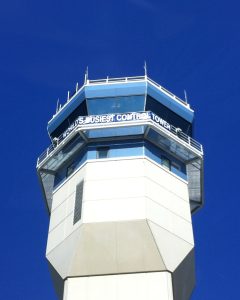Let me quote §61.103(b), “Be able to read, speak, write, and understand the English language…”. This here is one of the eligibility requirements for Private Pilots and every other Pilot Certificate for that matter. Throughout training, however, it seems as if we are learning an entirely new language consisting of proper ATC phraseology and technique that comes with its own set of rules. For example, you are not flying at ten thousand feet, you are at one zero thousand. Communication plays such an important role in the aviation environment and as a pilot you will be held to a higher standard of speaking. It takes practice and confidence to get it right and you will make mistakes on the radios, everyone does. What’s important is that you take those mistakes and learn from them. The Aeronautical Information Manual (AIM) lays down the necessary knowledge to prepare you for communicating over the radio, let’s take a look at some of the information contained in Chapter 4 Section 2 (4-2-1).

When making an initial call or contact to an ATC facility you should use the following format.
- Name of the facility being called
- Your full aircraft identification
- Your position when operating on the airport surface
- The type of message to follow or your request
- The word “Over” if required.
So for example if I wanted to request VFR flight following. “SoCal Approach, Mooney One Zero Zero Alpha, request VFR Flight Following.”
The controller will likely respond requesting additional information from you like location and altitude. When transmitting an altitude you should always separate the digits in thousands so 7,500 would be “Seven Thousand Five Hundred” and not “Seventy Five Hundred”. Or 15,000 would be “One Five Thousand.”
Remember to always use the phonetic alphabet; this helps to prevent confusion when communicating.
Communications referring to heading directions are always given in magnetic unless follow by the word true. You should always use the full three digits of a bearing. If your heading is 70 degrees it should be stated as “zero seven zero”.
In addition, there are a plethora of new words and meanings you should understand like squawk, ident, or line-up-and-wait.
You can find some great information in the FAA brochure on Communication: A Key Component of Safe Flight found here.
Also, be sure to read through the AIM to brush up on all ATC Communication Procedures found in Chapter 4.




